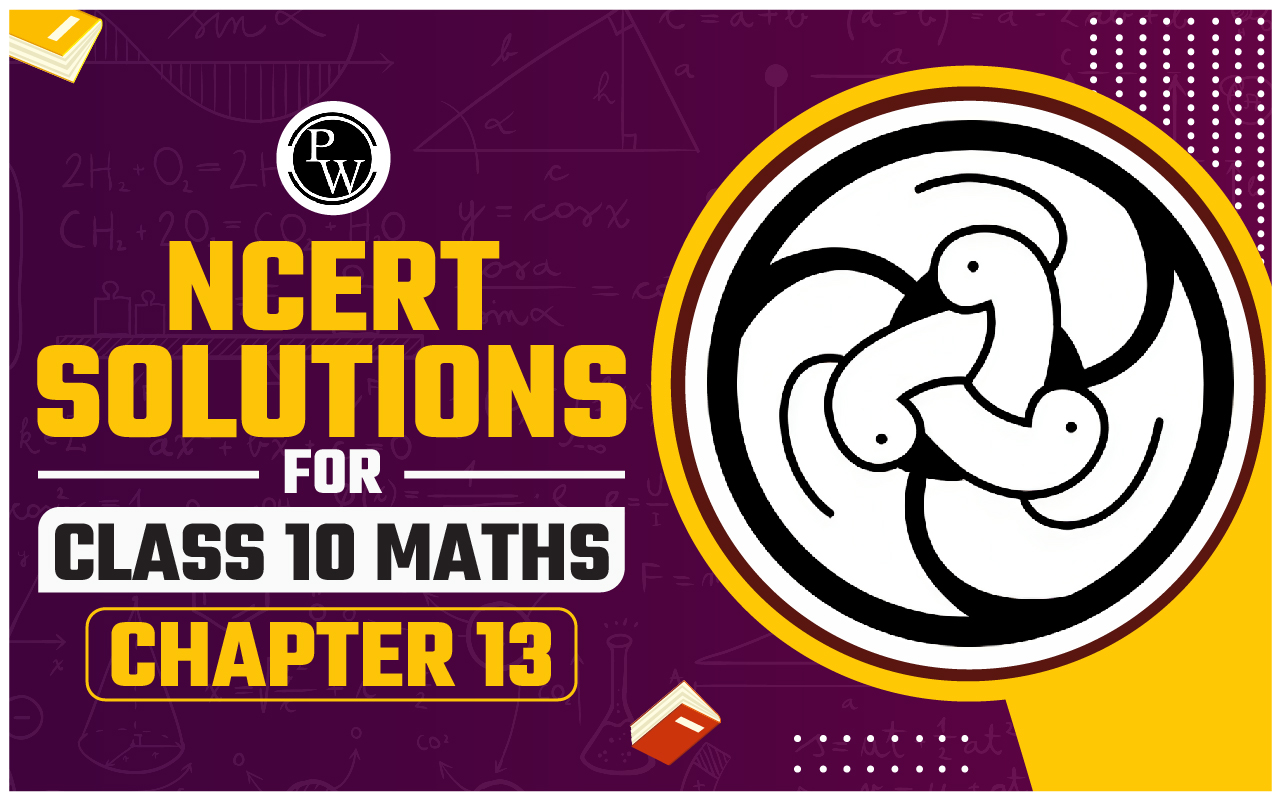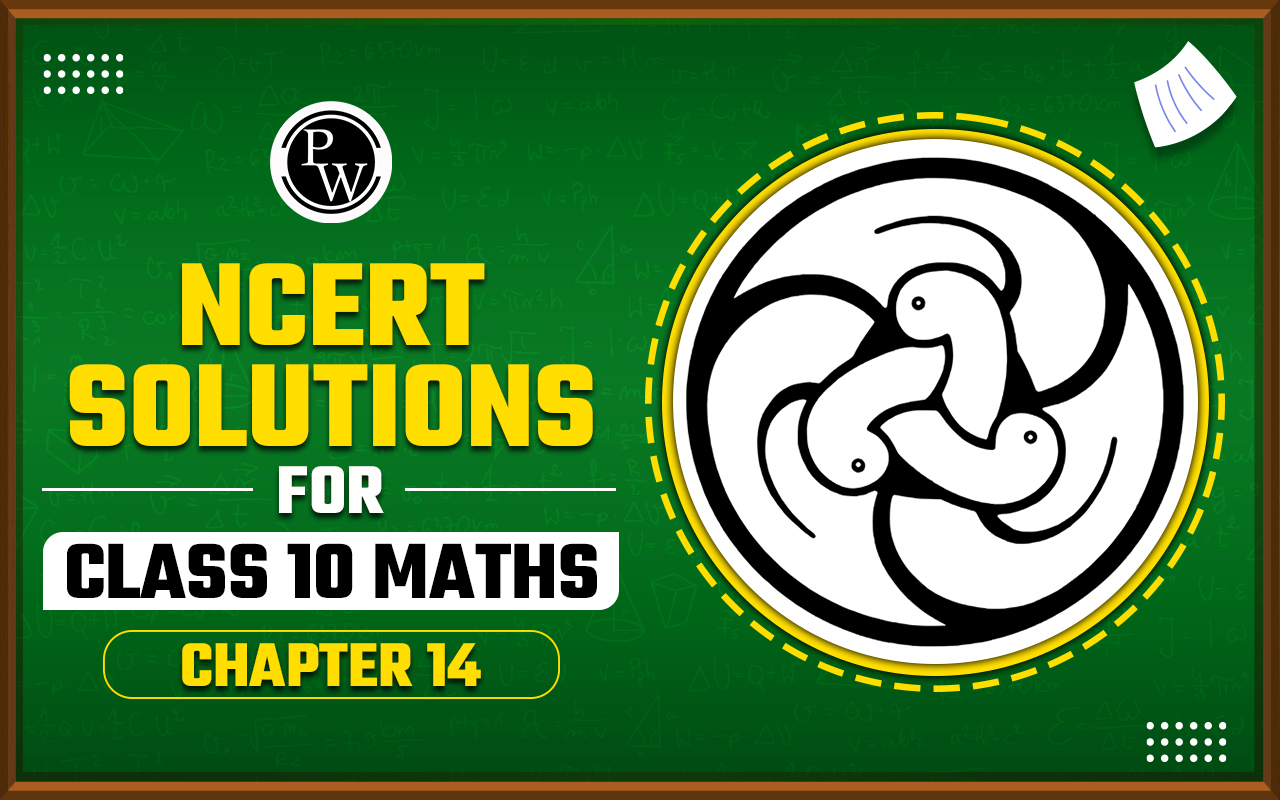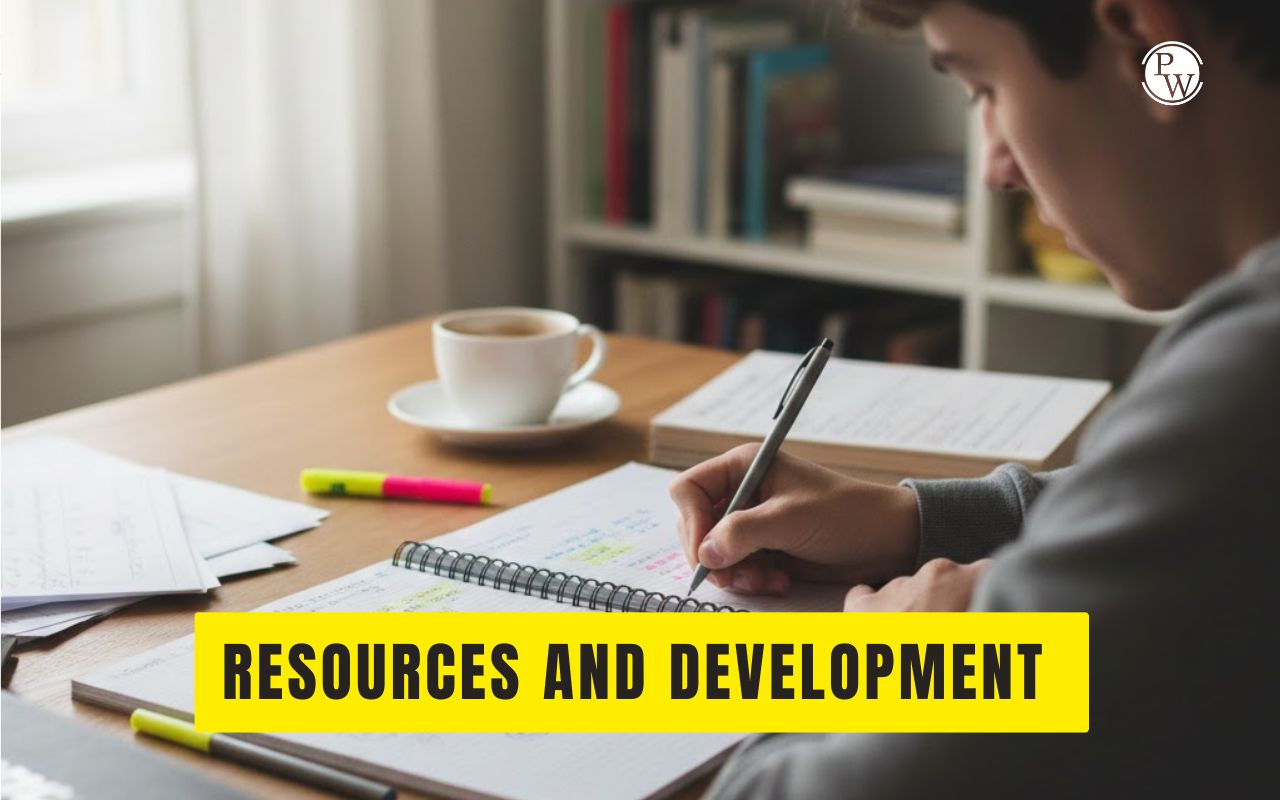

CBSE Class 10 Science Notes Chapter 12: CBSE Class 10 Science Notes Chapter 12 are essential for understanding as they lay the foundation for principles you will use later. Therefore, it's crucial to examine this chapter since many questions are likely to come from here in any exam. The Class 10 electricity chapter notes are valuable. Crafted by experts, these revision notes provide an advantage over peers, offering clear explanations of challenging topics in simple language.
Class 10 Science Chapter 12 notes are available in PDF format online for free download on various platforms, enabling students to quickly revise important concepts with ease. This resource aids stress-free revision of crucial topics in Class 10 Science Chapter 12 electricity. For better solutions in Maths, download Class 10 Maths NCERT Solutions to revise the entire syllabus and score more marks in your examinations.CBSE Class 10 Science Notes Chapter 12 Electricity
CBSE Class 10 Science Notes Chapter 12 are given in a detailed way for CBSE class 12 students. Students can use these notes for quick revision:CBSE Class 10 Science Notes Chapter 12 Electricity Introduction
In Chapter 12, 'Electricity,' the exploration of fundamental electrical principles unfolds, shedding light on the nature of electricity and the pivotal factors governing its flow within circuits. The chapter intricately navigates through the intricate behaviour of electric current, connecting these phenomena to the atomic structure. A comprehensive examination of the heating effects induced by electric current is a key focus, with practical applications underscored for a holistic understanding. The discussions seamlessly intertwine the abstract concept of atomic structure with the tangible effects of electric current, providing students with a well-rounded comprehension of the topic. By bridging theoretical foundations with real-world applications, Chapter 12 endeavours to equip learners with a profound insight into the essential principles that govern electricity and its practical implications in various contexts.| CBSE Books for Class 10 | |
| CBSE Class 10th Science Book | CBSE Class 10th Social Studies Book |
| CBSE Class 10th English Book | CBSE Class 10th Mathematics Book |
| CBSE Class 10th Hindi-A Book | |
Atomic Structure:
The atomic structure is a central theme in the exploration of electricity. An atom is composed of a positively charged nucleus orbited by negatively charged electrons. Particularly significant are valence electrons in metals, which, due to their unique freedom, can move freely within the conductor. This characteristic mobility of valence electrons is crucial in the constitution of electric current. As these electrons navigate through the metallic lattice, they play a pivotal role in facilitating the flow of electric current. Understanding the behaviour of valence electrons in metals lays the groundwork for comprehending the fundamental principles underlying electricity, setting the stage for further exploration into more intricate aspects of electric current and its diverse applications.Charge:
Charge, an inherent property of matter, plays a fundamental role in the electromagnetic interactions that govern the behaviour of particles. In the atomic structure, negatively charged electrons orbit the positively charged nucleus. The interaction between these charged particles creates electromagnetic forces, essential for the cohesion of atoms and molecules. Charged particles experience attraction or repulsion based on their charge polarity, following Coulomb's law. This electromagnetic force extends beyond the atomic level, influencing the macroscopic behaviour of materials.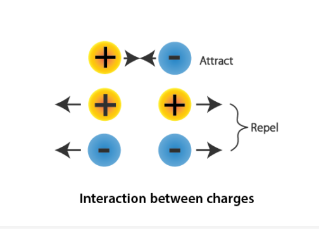 Understanding this intrinsic property of charge is pivotal in elucidating various electrical phenomena, from the functioning of basic electronic components to the intricate workings of electric circuits, providing a foundational framework for comprehending the broader field of electromagnetism.
Understanding this intrinsic property of charge is pivotal in elucidating various electrical phenomena, from the functioning of basic electronic components to the intricate workings of electric circuits, providing a foundational framework for comprehending the broader field of electromagnetism.
Interaction between Charges:
Conductors allow easy current flow, while insulators resist it. Examples: Conductors - copper, iron; Insulators - glass, dry wood, cotton.Electric Potential and Potential Difference:
- Electric potential at a point is the work done bringing a unit positive charge from infinity.
- Potential difference is the difference in electric potentials between two points.
- Mathematically, V = W / Q , where V is potential difference, W is work done, and Q is electric charge.
Electric Current (I):
Flow of electric charges is termed electric current ( I = Q / t ).Models of Electric Current:
Drift Velocity of Electron: Average velocity attained by an electron inside a metallic conductor due to an applied electric field.Drift Velocity of Electron
It is average velocity that has electron attains inside a metallic conductor due to its application of an electric field due to the potential difference.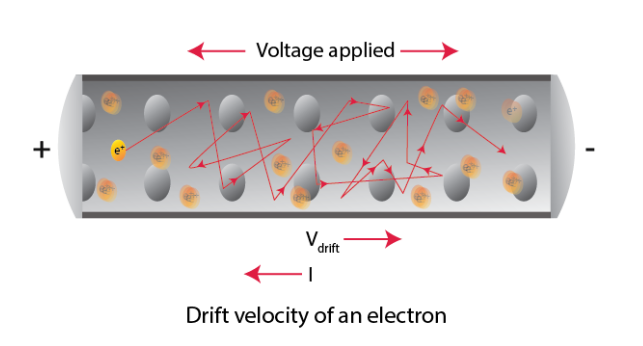
Battery and Its Working:
- A cell, a source of potential difference, is created by internal chemical reactions.
- A combination of cells forms a battery.
Electric Circuit:
- A closed-loop path for current flow is an electric circuit.
- A circuit diagram symbolically represents an electric circuit.
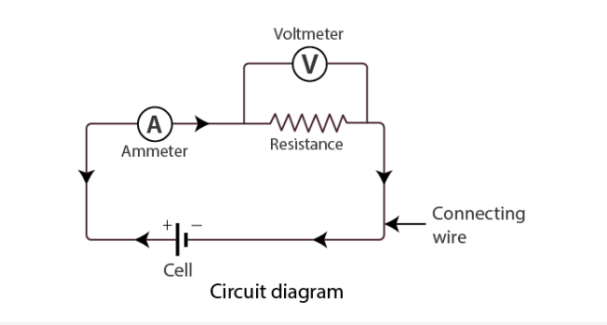
Resistance and Ohm’s Law:
Ohm’s Law:
Current (I) is directly proportional to potential difference (V) for an ohmic conductor.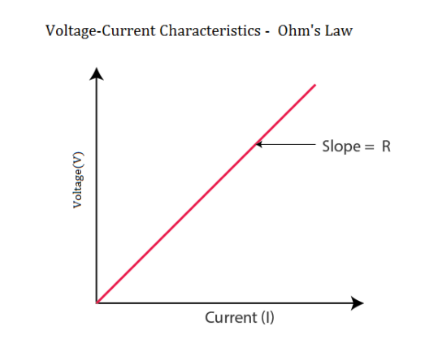 Resistance (R) is a measure of opposition to current flow.
V = IR
Resistance (R) is a measure of opposition to current flow.
V = IR
Factors Affecting Resistance:
- Resistance is affected by conductor length, nature, temperature, and cross-sectional area.
- Resistivity measures the resistance of a substance of unit length and cross-sectional area.
Ohmic and Non-Ohmic Resistors:
Ohmic resistors follow Ohm’s Law, while non-ohmic resistors do not.Superconductors:
Superconductors offer zero resistance to current flow, e.g., aluminium, niobium.Combination of Resistors:
Combination of Resistors (Series): Req = R1 + R2 Combination of Resistors (Parallel): 1/Req = 1/R1 + 1/R2 EMF and Terminal Voltage: EMF is the potential difference across cell terminals without current flow. Terminal voltage is the potential difference with current flow.Electric Power and AC:
- Joule’s Law states H ∝ I^2, H ∝ R, H ∝ t
- The heating effect is utilised in electrical appliances.
- Electric power ( P = W / t) is the rate of energy consumption.
Uses of Heating Effect of Electric Current:
Applied in electrical appliances like kettles, irons, heaters, etc.Electric Power:
- Electric power ( P = I^2R ) is consumed when current flows at a potential difference.
- 1 kWh = 3.6 × 10^6 J.
Benefits of CBSE Class 10 Science Notes Chapter 12
Conceptual Clarity: The notes provide clear and concise explanations of fundamental electrical concepts such as electric current, resistance, potential difference, and Ohm's law. This ensures that students develop a solid foundation and conceptual clarity, paving the way for more advanced studies in physics. Structured Learning: The notes are organised in a structured manner, aligning with the CBSE curriculum. This systematic arrangement aids students in following a logical sequence of topics, making it easier to understand the interrelationships between different concepts in electricity. Exam Preparation: Tailored to the CBSE Class 10 Science exam pattern, these notes highlight crucial topics, potential questions, and key areas of focus. This targeted approach assists students in preparing effectively for their examinations, helping them to prioritise and focus on essential content. Visual Aids and Examples: The inclusion of visual aids, diagrams, and practical examples enhances the learning experience. Visual representation aids in better understanding complex concepts, making the learning process more engaging and effective. Application-Based Learning: The notes facilitate application-based learning by connecting theoretical concepts to real-world applications. This approach helps students understand the practical implications of electrical principles, fostering a deeper appreciation for the role of electricity in everyday life. Quick Revision: With summarised information and key points, the notes serve as a handy tool for quick revision before exams. Students can efficiently review the entire chapter, reinforcing their understanding and boosting confidence. Self-Assessment: The notes often include practice questions and exercises, enabling students to self-assess their understanding. Regular practice with these questions reinforces learning and helps identify areas that may require further clarification. Time Management: The structured notes aid in efficient time management. Students can allocate their study time effectively, focusing on specific sections that may need additional attention, thereby optimising their preparation. Real-life Applications: The notes delve into real-life applications of electrical concepts, illustrating how electricity is used in various devices and technologies. This practical approach enhances students' understanding by showcasing the relevance of theoretical knowledge in the world around them. Problem-Solving Skills: By presenting solved examples and practice problems, the notes help students develop effective problem-solving skills. The step-by-step solutions guide them in approaching different types of electrical problems, honing their analytical and critical-thinking abilities. Interactive Learning Resources: Many CBSE Class 10 Science Notes include links or references to additional online resources, simulations, or interactive tools. These resources offer students an opportunity for more dynamic and interactive learning experiences, fostering a deeper understanding of electrical principles. Cross-disciplinary Connections: The notes may highlight connections between electricity and other scientific disciplines, showcasing the interdisciplinary nature of science. Understanding how electrical principles relate to physics, chemistry, and biology contributes to a holistic scientific perspective. Updated Information: The notes are designed to incorporate any updates or changes in the curriculum or scientific understanding. This ensures that students have access to the latest information, aligning with educational standards and advancements in the field of physics and electrical science. Enhanced Memory Retention: Visual elements, mnemonic devices, and concise summaries in the notes contribute to enhanced memory retention. Students can recall key concepts more effectively during exams, quizzes, or when applying their knowledge in practical situations. Peer Learning Opportunities: CBSE Class 10 Science Notes can be used as a resource for collaborative learning. Students can engage in group discussions, share insights, and collectively solve problems, fostering a collaborative and supportive learning environment.How to Prepare With CBSE Class 10 Science Notes Chapter 12
Preparing with CBSE Class 10 Science Notes for Chapter 12 (Electricity) can be a strategic and effective approach for students aiming to excel in their examinations. Here's a detailed guide on how to make the most out of these notes: Thorough Reading: Begin by thoroughly reading the CBSE Class 10 Science Notes for Chapter 12. Understand the fundamental concepts, definitions, and key principles related to electricity. Highlight Key Points: While reading, use highlighters or make notes to mark essential points. Identify formulas, laws, and important theorems to create a quick reference guide for later revision. Conceptual Clarity: Ensure that you have a clear understanding of the basic electrical concepts, such as Ohm's Law, electric circuits, resistance, current, and potential difference. Seek additional explanations if any concept seems unclear. Solve Practice Problems: CBSE Class 10 Science Notes often include solved examples and practice problems. Work through these problems to apply theoretical knowledge and reinforce your understanding of various electrical principles. Create Flashcards: Condense key information into flashcards. Include formulas, definitions, and important concepts. These flashcards can serve as quick review tools, helping you revise before exams. Regular Revision: Make a revision schedule and revisit the notes regularly. Short, consistent study sessions are more effective than last-minute cramming. Use the notes as a quick review before exams to reinforce your memory. Interactive Learning: Explore any interactive elements provided in the notes, such as links to simulations or online resources. Interactive learning enhances your understanding and makes studying more engaging. Practice with Previous Years' Papers: Familiarise yourself with the exam pattern by practising previous years' question papers. CBSE Class 10 Science Notes can be used as a reference while solving these papers to ensure you cover all relevant topics. Collaborative Study: Consider forming study groups with classmates. Discussing concepts, solving problems together, and explaining topics to peers can deepen your understanding and provide different perspectives. Seek Clarifications: If you encounter difficulties or have doubts, don't hesitate to seek clarifications from teachers, classmates, or online resources. Understanding each concept thoroughly is crucial for success. Utilise Additional Resources: CBSE Class 10 Science Notes can be supplemented with additional resources such as textbooks, reference books, and online tutorials. These resources can provide alternate explanations and practice material. Mock Tests: Take mock tests under exam conditions to assess your preparation. Time management and familiarity with the exam environment are essential for performing well. Stay Healthy: Ensure a balance between study and relaxation. A healthy lifestyle, including proper sleep and nutrition, contributes to better concentration and retention. Stay Updated: In case of any updates or changes in the curriculum, stay informed. Check for the latest information and adjust your study plan accordingly.CBSE Class 10 Science Notes Chapter 12 FAQs
🔥 Trending Blogs
Talk to a counsellorHave doubts? Our support team will be happy to assist you!

Check out these Related Articles
Free Learning Resources
PW Books
Notes (Class 10-12)
PW Study Materials
Notes (Class 6-9)
Ncert Solutions
Govt Exams
Class 6th to 12th Online Courses
Govt Job Exams Courses
UPSC Coaching
Defence Exam Coaching
Gate Exam Coaching
Other Exams
Know about Physics Wallah
Physics Wallah is an Indian edtech platform that provides accessible & comprehensive learning experiences to students from Class 6th to postgraduate level. We also provide extensive NCERT solutions, sample paper, NEET, JEE Mains, BITSAT previous year papers & more such resources to students. Physics Wallah also caters to over 3.5 million registered students and over 78 lakh+ Youtube subscribers with 4.8 rating on its app.
We Stand Out because
We provide students with intensive courses with India’s qualified & experienced faculties & mentors. PW strives to make the learning experience comprehensive and accessible for students of all sections of society. We believe in empowering every single student who couldn't dream of a good career in engineering and medical field earlier.
Our Key Focus Areas
Physics Wallah's main focus is to make the learning experience as economical as possible for all students. With our affordable courses like Lakshya, Udaan and Arjuna and many others, we have been able to provide a platform for lakhs of aspirants. From providing Chemistry, Maths, Physics formula to giving e-books of eminent authors like RD Sharma, RS Aggarwal and Lakhmir Singh, PW focuses on every single student's need for preparation.
What Makes Us Different
Physics Wallah strives to develop a comprehensive pedagogical structure for students, where they get a state-of-the-art learning experience with study material and resources. Apart from catering students preparing for JEE Mains and NEET, PW also provides study material for each state board like Uttar Pradesh, Bihar, and others
Copyright © 2025 Physicswallah Limited All rights reserved.
Get App

